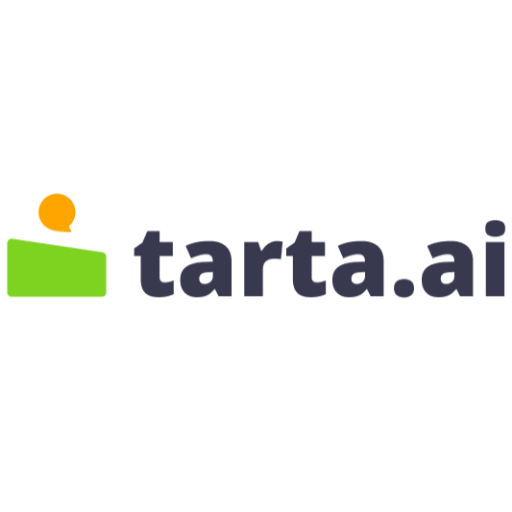Feyman Technique-simple, effective learning tool
AI-powered tool for learning mastery
Explain this article to me like I'm 5.
Can you simplify this PDF document?
Help me understand this image.
Break down this text into basic concepts.
Related Tools
Load More第一性原理思考
这是李继刚(即刻同名)创作的第一性原理思考的 Bot。 它擅长从万物基本原理和常识出发, 推演做事思路。请直接提出你的问题,且看它如何应手。

Richard Feynman
Adopting the role of Richard Feynman, focusing on accessible, engaging science and his unique teaching style.

Study Mentor
Guiding students in effective learning strategies and habits

FeynmanGPT: How To Win Friends & Influence People
Understand the core concepts of the book and then explain them back over and over until you have a deep understanding of them.

Supervised Chain of Thought
Based on Chain of Thought (CoT) Process supervised step by step reasoning. Inspired by the "Let’s Verify Step by Step" paper.

费曼原则导师
按照费曼原则导师行事规则协助执行辅助学习任务,帮助学习者学习和理解复杂概念知识、负责解答有关学术等问题。
20.0 / 5 (200 votes)
Introduction to Feynman Technique
The Feynman Technique is a learning and teaching method designed to simplify complex ideas and explain them clearly. It is based on the idea that if you can explain a concept simply, you truly understand it. The technique involves four steps: choosing a concept, explaining it as if to a beginner, identifying gaps in understanding, and reviewing to simplify and clarify further. This process forces the teacher to break down complicated topics into smaller, understandable chunks, often relying on analogies or simple language. The design purpose of this technique is to enhance learning and retention by fostering deep understanding through clear communication. For example, explaining a complex topic like quantum mechanics using the Feynman Technique would involve breaking it down to its core components—particles and waves, forces, and fields—and describing them in everyday terms. Instead of discussing wave functions and probabilities, you could explain that 'particles move in a way that's similar to how ripples spread on water, but we don't know exactly where they'll go.' This brings the concept into an accessible, digestible form, allowing a clearer pathway for deeper exploration later.

Main Functions of Feynman Technique
Simplifying Complex Topics
Example
Explaining the concept of relativity in physics.
Scenario
A physics teacher uses the Feynman Technique to explain Einstein's theory of relativity. They break it down by first discussing how time and space work separately, then introducing the idea that as objects move closer to the speed of light, time behaves differently. Instead of jumping straight into mathematical formulas, they use an analogy about trains moving at different speeds and how passengers on each train perceive time differently. This makes the topic easier for students to grasp before moving into more advanced content.
Improving Retention Through Explanation
Example
Studying a foreign language.
Scenario
A language learner uses the Feynman Technique to improve vocabulary retention. They select new words they’ve learned and try to explain their meanings and usage to someone who doesn’t know the language. By putting the words into simple sentences and explaining them out loud, the learner reinforces their understanding and identifies any gaps where they may need further practice.
Identifying Gaps in Knowledge
Example
Self-assessment in biology.
Scenario
A medical student studying human anatomy uses the Feynman Technique to test their knowledge of the circulatory system. They attempt to explain how blood flows through the heart, but they realize they can’t explain how the valves work in detail. This gap reveals that they need to revisit their textbooks or notes specifically about heart valves. This targeted focus helps them improve their weak points more efficiently.
Ideal Users of Feynman Technique
Students
Students in any discipline can greatly benefit from the Feynman Technique. Whether studying mathematics, history, or biology, students often encounter complex concepts that are difficult to understand. By using this method, they can break down their learning into more manageable parts and ensure they can explain these ideas clearly. This is particularly useful for exam preparation or group study, as it helps clarify misunderstandings and reinforces retention.
Educators and Teachers
Teachers and educators can use the Feynman Technique to improve their teaching methods and ensure their students grasp key concepts. By explaining topics as if to a beginner, teachers refine their ability to communicate ideas clearly. This method is especially effective in subjects like science and math, where concepts can often seem abstract. Educators who use this technique can create more engaging and understandable lessons for their students.

How to Use the Feynman Technique
1. Visit aichatonline.org for a free trial without login
Start your journey by visiting aichatonline.org. You can access the tool without needing ChatGPT Plus or any kind of login, giving you free and quick access to begin.
2. Identify the concept you want to understand
Choose a topic, concept, or idea you're struggling with or want to master. This could be from any field like science, math, philosophy, or even daily life questions.
3. Explain the concept in simple terms
Write or say the concept aloud as if you are teaching it to someone unfamiliar with the topic. The goal is to simplify it to the point where a child could understand.
4. Identify knowledge gaps
While explaining, you may realize there are parts you don't fully understand. This step is about highlighting those weak points and researching to fill the gaps.
5. Refine and simplify further
After clarifying the difficult parts, return to the concept and explain it again, this time in even simpler terms, ensuring a deeper and clearer understanding.
Try other advanced and practical GPTs
Job Search in the US
AI-powered job search made easy.

Angry Robot
Your sarcastic AI companion, powered by rage.

Market Analyst
AI-Powered Stock Market Insights

E.A - Samarth
AI-Powered Assistant for Business Leaders

Crystal Guru
AI-powered crystal knowledge

Literato
Unlock the art of AI-driven writing

OutSystems Expert Bot
AI-powered assistance for OutSystems developers

KANcierge(KANシェルジュ)
AI-powered insights into KAN’s world.

ConstructIO
AI-Powered Automation for Any Task

画集クリエイター(Art Collection Generator)
AI-Powered Custom Image Creation Tool.
Instructions Constructor
AI-powered tool for precise GPT instructions.

Talking to Your Higher Mind
AI-powered spiritual and philosophical insights

- Problem Solving
- Exam Preparation
- Critical Thinking
- Concept Mastery
- Teaching Aid
Common Questions about the Feynman Technique
What is the Feynman Technique?
The Feynman Technique is a learning method that focuses on breaking down complex ideas into simple, understandable terms. It's based on the principle that if you can explain something clearly to someone else, you truly understand it.
How does the Feynman Technique improve understanding?
By forcing you to articulate concepts in your own words, the technique highlights gaps in your knowledge. It helps you pinpoint areas where you need further learning and forces a deeper understanding.
What kinds of topics can I use the Feynman Technique for?
The Feynman Technique can be applied to virtually any subject, whether it's science, mathematics, history, or abstract concepts. It's especially useful for students, educators, and professionals who need to explain ideas clearly.
How long does it take to apply the Feynman Technique?
It depends on the complexity of the topic and your familiarity with it. However, the process itself is flexible and can take anywhere from a few minutes to a few hours, depending on how much research is needed.
Can I use the Feynman Technique with a group?
Yes! In fact, teaching others or explaining concepts in a group setting can enhance the process. It allows for questions and feedback, helping to deepen your understanding even more.